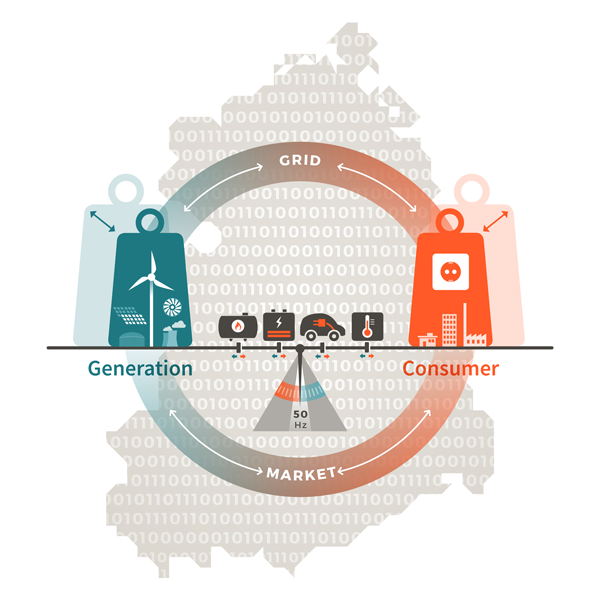The leading edge energy development framework championed by the government of Germany is now examining options that will allow it to move effectively into its second phase. The first phase of “Energiewende," running from 2011 to 2016, focused on reduced reliance on nuclear energy, increased installation of renewable generation, and a series of renewable energy integration initiatives. The second phase, although far from finalized, is likely to feature a heavy emphasis on smart grid technology.

The primary challenge identified is “Coping with intermittence and integrating large RES shares into the energy system.” WindNODE, which includes the capital city of Berlin, is a particularly poignant example:
1. Renewables comprise 48% of the electricity mix
2. The grid supplies more than 16 million people
3. The region supports major power exports: While consumption is ~ 100 TWh, exports are approximately ~ 40 TWh
4. 70 project partners.
Key areas that the WindNODE tests are designed to address include the following:
1. Identifying potential for flexibility
2. Activating flexibility
3. Sector coupling
4. Regionalisation vs. transmission
5. Market roles and business models relevant to Integration into the “energy market 2.0“
6. Intelligent, efficient grid infrastructure
7. Making use of new data
8. Developing standards for an intelligent energy system made in Germany
9. Regional development and export
10. Involving visitors and the public.
 “Sector coupling” refers to recognizing the interconnection between the power system and energy-intensive sectors like mobility, and heating/cooling. Rather than thinking of production and consumption as separate sectors, Markus Graebig, the Project Director for WindNODE, explains that, “the reason why sector coupling has come into vogue recently is that these other sectors can act as flexibility options which help level out the intermittency of renewables. For example, a large fleet of electric vehicles could be used as a flexible load, or even as true storage if the e-vehicles are ready for ‘bidirectional charging.’ And electric heaters (which have been discouraged in certain places because of their relative inefficiency in cases where primary energy is used only for heat) may have a renaissance because they can be an option for using temporary excess generation from wind/solar plants.”
“Sector coupling” refers to recognizing the interconnection between the power system and energy-intensive sectors like mobility, and heating/cooling. Rather than thinking of production and consumption as separate sectors, Markus Graebig, the Project Director for WindNODE, explains that, “the reason why sector coupling has come into vogue recently is that these other sectors can act as flexibility options which help level out the intermittency of renewables. For example, a large fleet of electric vehicles could be used as a flexible load, or even as true storage if the e-vehicles are ready for ‘bidirectional charging.’ And electric heaters (which have been discouraged in certain places because of their relative inefficiency in cases where primary energy is used only for heat) may have a renaissance because they can be an option for using temporary excess generation from wind/solar plants.”
The interest in “Regionalisation vs. transmission” is related to the tradeoffs between new transmission and new supply that are possible during a planning process. Mr. Graebig notes that, “In the German case, a large share of renewable electricity is produced in rural areas in a certain distance from the actual load centres. This may lead to the need for new or extended transmission capacity. As an alternative, so-called ‘hybrid power plants’ near load centres and/or sector coupling, such as installing electric heaters as part of the district heating system, can avoid or defer the need to build new power lines. Our approach is that both regionalisation and transmission are needed to better integrate large shares of renewables into the system. However, there might be time preferences for either transmission or regionalisation: If a certain high voltage transmission line is overloaded, which would usually lead to the curtailment of wind/solar generation, regionalisation can help ease the situation.”
Some of the elements to be included in the field tests are:
• ICT platform
• Flexible generation
• Efficient grids
• Demand side management
• Market design and regulation
• Storage
• Flexible industrial demand
• Smart City neighbourhoods
• Participation and dissemination.
Funding for the field tests is in the order of 230 million Euros, including approximately 40 million Euros for WindNODE. The field tests should be completed by December 2020.
The project website can be found at www.windnode.de and English language additions are expected in October 2017.
